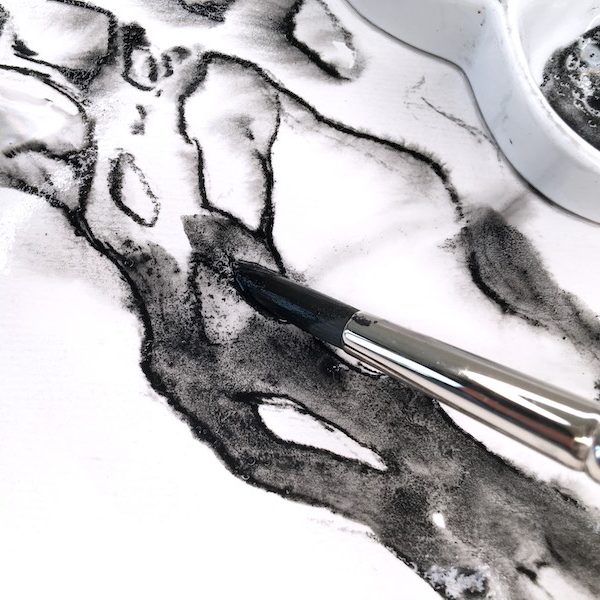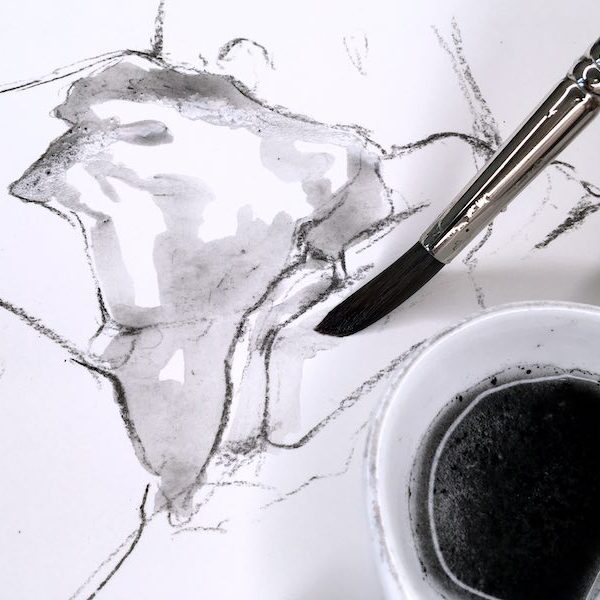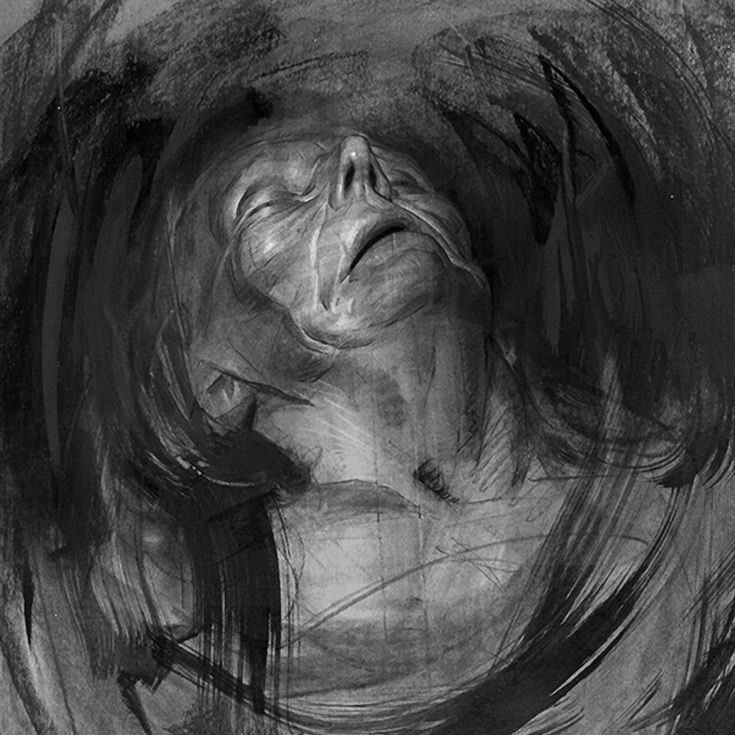Wet charcoal drawing is an innovative and dynamic technique that can elevate your artistic expression. While traditional charcoal drawing is popular for its richness and depth, the wet method introduces a new dimension to your work. This approach applies different techniques to create varying textures and effects, allowing for a more fluid and expressive form of art. In this article, we’ll explore how wet charcoal drawing transforms artwork, including its techniques, benefits, and the creative possibilities it offers.
Understanding Wet Charcoal Techniques
The Basics of Wet Charcoal Drawing
Wet charcoal drawing combines charcoal with a liquid medium, typically water, to enhance the visual aspects of your artwork. The process begins by applying charcoal to your paper, creating a base layer with traditional techniques. After this initial application, water is introduced using brushes, sponges, or even your fingers. The water activates the charcoal, resulting in softer lines and blended shades. This method makes wet charcoal drawing distinct from standard techniques.
Tools and Materials Needed
To get started with wet charcoal drawing, you’ll need several specific tools. First, high-quality charcoal sticks or pencils form the foundation of your work. Next, you’ll need thick paper that can withstand moisture; watercolor paper is a good option. A few brushes or sponges will help you apply water evenly. Finally, having a container for water and paper towels on hand assists in cleanup and creates intentional textures. With these materials, you’re well on your way to creating dynamic art.

Creative Freedom and Expression
Fluidity in Application
One of the most appealing aspects of wet charcoal drawing is the fluidity it brings to your artwork. Once the charcoal is activated with water, you can blend and manipulate it easily. This fluidity allows for a flowing and organic feel to the pieces, making them appear alive. Artists often find themselves exploring new forms of expression through this technique, producing work that may surprise them. This newfound freedom cultivates a more authentic and spontaneous artistic voice.
Experimentation with Texture
Wet charcoal introduces diverse textures that can enhance your artwork’s depth. By adjusting the amount of water and using different applicators, you can create various effects. Soft washes, smoother gradients, and bold strokes can all exist in one piece. These variations allow artists to experiment and find unique ways to represent their subjects. Whether you’re depicting landscapes, portraits, or abstract concepts, the control over texture can elevate the overall feel of your work.
Enhanced Depth and Dimension
Creating Richer Shadows
Wet charcoal drawing significantly enhances depth in art. When blended with water, the charcoal creates darker shadows and lighter highlights. This contrast gives form and dimension to your subjects, making them more engaging. Instead of flat compositions, artists can produce three-dimensional effects that draw viewers in. Enhanced shadows provide a sense of realism and emotion that can powerfully impact the audience.
Layering Techniques
Another advantage of wet charcoal drawing is the ability to layer different shades. Artists can start with light applications and gradually add depth by introducing more charcoal and water. This layering technique allows you to build complexity in your artworks. You can create nuances in your shading and highlights, making the artwork visually captivating. Each layer adds richness, making your art not only more profound but also more intricate.

Bridging Different Art Forms
Blending Charcoal with Other Mediums
Wet charcoal drawing encourages the blending of different artistic mediums. Artists often find success combining charcoal with ink, watercolor, or even pastels. This fusion opens new avenues for creativity, allowing for more complex compositions. The wet charcoal can serve as a foundation on which other mediums can build. This versatility allows you to approach your artistic projects with a fresh perspective and engage in cross-media experimentation.
Expanding Artistic Styles
Embracing wet charcoal techniques can also help in evolving your artistic style. It can complement various styles, from realism to impressionism. Each style can benefit from the dynamic qualities of wet charcoal drawing. Artists can adapt the technique to suit their unique voice, exploring different interpretations of their subjects. This adaptability makes it a valuable tool for any creative individual looking to expand their artistic repertoire.
Achieving Emotional Impact
Conveying Mood and Atmosphere
The wet charcoal technique is rich in emotional potential. The fluidity and softness of the medium can evoke feelings of tranquility, chaos, or nostalgia, depending on how it’s applied. Whether you aim to convey moody landscapes or intimate portraits, wet charcoal allows you to manipulate emotion within your work. The ability to blend lines and create soft edges fosters a delicate atmosphere that resonates with viewers, engaging them on a deeper level.
Personal Connection to Art
Art is an expression of the self, and the wet charcoal technique can deepen this connection. The hands-on approach allows artists to feel more engaged with their work. The tactile nature of applying water and charcoal creates a direct link between the artist and the creation process. This emotional investment often results in pieces that convey personal narratives, reflections, or experiences. Artists find that the more connected they are to their materials, the more authentic the final piece becomes.

Overcoming Challenges in Wet Charcoal Drawing
Mastering Control
While wet charcoal drawing offers unique opportunities, it can also present challenges. One common issue artists face is maintaining control over the medium. The fluid nature of water can lead to unexpected results, which may be either a blessing or a curse. Learning to control the amount of water and charcoal requires practice. As you become more comfortable with the medium, you’ll find ways to embrace spontaneity while achieving the desired effects.
Patience in the Process
Another aspect to consider is that wet charcoal drawing often entails a longer process. Artists may need to wait for layers to dry before adding more details. This patience can be a learning curve for those accustomed to quicker techniques. However, this slow approach often leads to richer results. The time invested in ironing out imperfections and refining your work can ultimately translate to more polished and thoughtful pieces. Embracing the journey rather than rushing to the finish line can lead to deeper artistic growth.
The Joy of Community and Learning
Sharing Experiences with Fellow Artists
One of the most rewarding aspects of exploring wet charcoal drawing is the opportunity to connect with fellow artists. Engaging in workshops and art classes where this technique is taught fosters a sense of community. Artists often share their experiences, techniques, and personal tips for maximizing the medium’s potential. This collaborative environment enhances creativity, allowing participants to learn from one another. Sharing successes and challenges in a supportive space can inspire new ideas and encourage experimentation.
Online Communities and Resources
Additionally, the internet has opened doors for artists to engage with global communities focused on wet charcoal techniques. Online forums, social media groups, and dedicated art platforms are filled with tutorials, videos, and discussions centered on this medium. Artists can share their work for feedback and critique, helping them grow and refine their skills. This sense of belonging can be incredibly motivating, pushing artists to take risks and try new approaches in their art. By connecting with others who share their passion, artists often find renewed inspiration and a deeper understanding of their craft.
Conclusion
Wet charcoal drawing is a transformative technique that enriches artistic expression. By combining fluidity with depth, it allows artists to explore new dimensions in their work. With its focus on comfort and emotional impact, it opens doors to creative freedom that many artists find invigorating. The unique qualities of wet charcoal drawing enable the blending of mediums and styles, enhancing the complexity of each piece. As you experiment with this technique, you’ll uncover how it can elevate your artwork and deepen your connection to your craft. Whether you’re just starting or are a seasoned artist, incorporating wet charcoal into your repertoire can lead to extraordinary artistic experiences. Embrace the challenge, and discover how this captivating medium can transform your artistic journey.